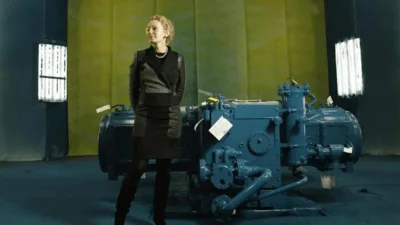The Ohio Mint, which is locating in Cooper Progress Park in the former Siemens factory complex, is a startup company that attributes its formation in part on inflation.
Federal government spending has gone through the roof during the COVID-19 pandemic, prompting fears of runaway inflation, Ohio Mint chief operating officer Ron Parr told the Mount Vernon News.
“I was approached by a group to build a new facility based on the current demand for precious metals, which is exceptionally high right now primarily due to the inflation scenario playing out in the country,” said Parr. “A lot of people don’t understand that inflation is extremely significant right now.”
The Ohio Mint will convert refined gold and silver into coin-like “rounds” and bars that will then be sold at retail.
“We refer to our products as rounds, not coins,” he said. “Coins are government-issued currency. Ours are not official currency.”
For an investor looking for a hedge against inflation, however, rounds can be purchased at a lower cost than currency, said Parr.
“Coins typically sell for more than rounds even though they are essentially the same thing – for example, one troy ounce of silver,” he said. “A lot of the investment in the country uses privately minted rounds, because they can acquire more silver or more gold for the same price than they could get with a government issued currency.”
Parr lives in Utah but is originally from Mansfield.
“One of the few available coin presses in the country happened to be in Mansfield,” he said. “
He chose that area as a site for the new mint.
“We found a building we really liked, but the problem is it didn’t have the electrical infrastructure,” he said.
They looked at Fredericktown but didn’t see much there and kept driving down toward Mount Vernon.
“We ran right into the Siemen plant,” he said. “We saw the for-lease signs and within an hour had a lot of the specifics of a deal worked out. That was the very day I was flying out to back West.”
The building the company will lease was once used by Rolls Royce to test jet engines.
It has not only exceptional electrical capacity but overhead cranes.
“A lot of the equipment we have generally weighs 15,000 to 20,000 pounds,” said Parr. “You can’t typically move that with a forklift. Having those cranes in there has already saved us quite a bit of money.”


